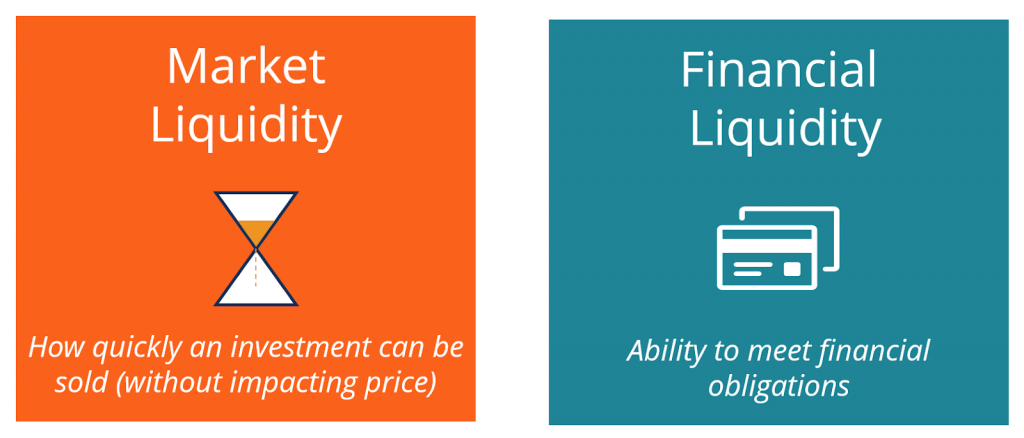What is Liquidity in Trading?
Liquidity in trading is a key characteristic of any financial market, whether it is the stock market, the foreign exchange market, or the cryptocurrency market. High liquidity means there are a large number of buyers and sellers in the market, allowing for minimal price fluctuations and reduced risks for participants. In low-liquidity conditions, an asset’s price can change drastically during transactions, making forecasting difficult and increasing costs.
This article examines how liquidity forms in various markets, why it is important, and how liquidity aggregation works in trading.

Liquidity in Cryptocurrency
Cryptocurrency liquidity refers to the ability of a digital asset to be quickly exchanged for fiat money or other cryptocurrencies with minimal loss in value. Unlike traditional financial markets, where liquidity can be managed by central institutions or market makers (the same liquidity providers for cryptocurrencies), crypto markets rely on a decentralized network of participants. The most liquid cryptocurrencies, such as Bitcoin and Ethereum, are traded on many platforms, characterized by high demand, large trading volumes, and narrow bid-ask spreads. However, less popular tokens may experience significant price fluctuations due to a limited number of market participants, making them illiquid and riskier for investors. Cryptocurrency liquidity is also directly linked to trading volumes: the higher the daily trading volumes, the more stable and reliable the trading environment. For example, the most liquid cryptocurrency, Bitcoin, had an average daily trading volume exceeding $29 billion as of August 2024, according to CoinMarketCap. The most liquid crypto trading pairs are BTC/USD and ETH/USD. It is worth noting that liquidity impacts all areas of cryptocurrency. For example, sufficient liquidity is needed for quick and legal withdrawal of cryptocurrencies. Moreover, it affects crypto staking: the higher the liquidity of coins, the higher the APY (annual percentage yield) for storing tokens.
Why is Liquidity Important?
- Price Stability – High liquidity reduces the risk of sudden price fluctuations, ensuring more predictable pricing.
- Lower Transaction Costs – Narrow bid-ask spreads lower trading costs.
- Faster Transaction Execution – Liquid markets allow for instant trade execution without waiting for a counterparty to appear.
- Increased Access to Capital – High liquidity facilitates access to funds, as assets can be quickly converted into cash or other assets.
- Reduced Risk of Manipulation – On liquid markets, it is harder to manipulate prices due to the large number of participants, making trading more transparent.
Difference Between Liquid and Illiquid Stocks
The difference between liquid and illiquid stocks lies in their ability to be quickly bought or sold on the market without significant price losses.- Liquid Stocks are securities actively traded on the stock market, with high trading volumes. Examples include major companies in the S&P 500 index, such as Apple, Microsoft, or Amazon. For instance, Apple (AAPL) shares have an average daily trading volume of over 60 million shares, making them highly liquid. The narrow bid-ask spread (often less than $0.01) allows investors to make transactions with minimal costs and quickly respond to market changes.
- Illiquid Stocks are securities that are traded less frequently, often with low volumes and significant price fluctuations. Examples include stocks of small companies or so-called “penny stocks” (stocks priced below $5). For example, stocks of small companies on over-the-counter (OTC) markets may have trading volumes of less than 10,000 shares per day, with spreads reaching several cents or even dollars. This means investors may face difficulties in selling such stocks at acceptable prices, especially under low-demand conditions.
How Does Explicit and Hidden Liquidity Form?
Explicit liquidity and hidden liquidity are two different types of liquidity formed on the market, depending on how participants place their orders and interact with overall market supply and demand.- Explicit Liquidity Explicit liquidity refers to the volume of orders visible on the order book and available to all market participants. It is formed through limit orders, where traders specify a particular price for buying or selling an asset. Such orders are openly displayed in the order book and show the volume and price at which a deal can be made. For example, if a trader wants to sell 100 shares of Apple at $180, they place a limit order, and this order becomes visible to all other market participants. This order adds explicit liquidity to the market, as any other trader can immediately buy these shares at the offered price.
- Hidden Liquidity Hidden liquidity, on the other hand, is not displayed in the order book. It is formed through hidden orders, which may be placed but are not visible to other participants until execution. These orders, also known as “iceberg orders,” allow traders to hide most of their volume while displaying only a small portion to avoid significantly impacting the market. For example, a trader might place a hidden order to buy 10,000 shares but display only 100 shares on the market. Once this visible portion is executed, another small portion becomes visible in the order book. This allows the trader to keep their intentions concealed while avoiding a major impact on market prices.
